Is Mark Hughes' Southampton debut an attacking sign of things to come?
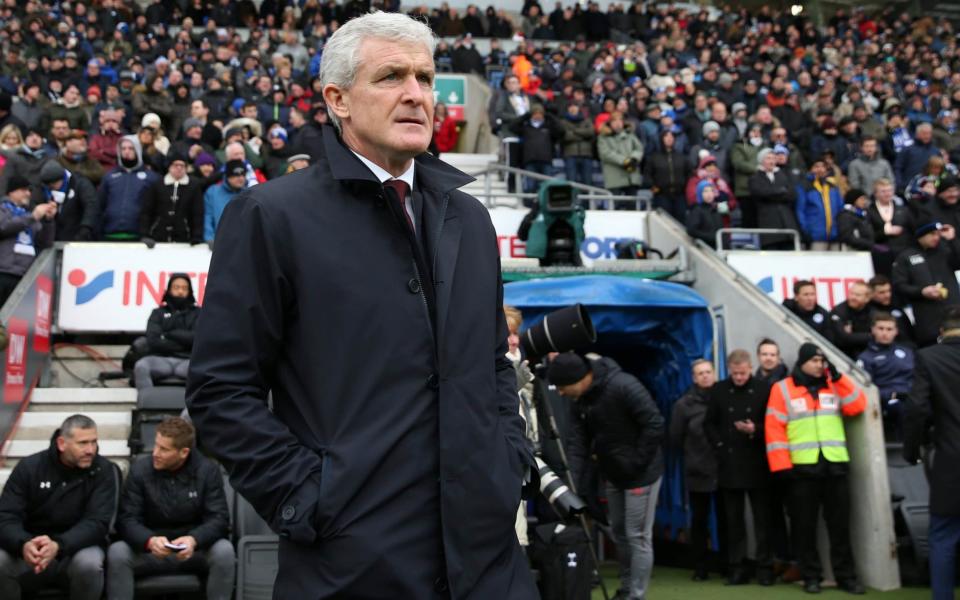
Southampton fans have been seriously underwhelmed by their team's performances this season. Goals are in short supply, the team lacks grit, Mark Hughes is the man tasked with staging a revival.
Curiously, instead of the familiar 4-2-3-1, win-some-lose-some approach Hughes normally takes with his teams, against Wigan he employed a tactical setup reminiscent of one he used to be part of before his Saints playing days. Whisper it, but it looked like it might even entertain.
The Man Utd 4-2-4
Southampton lined up in a 4-4-2 for their FA Cup on Sunday, with Manolo Gabbiadini and Guido Carillo as strikers - the kind of crazy attacking plan that Claude Puel and Mauricio Pellegrino didn't really appear to consider during their terms in charge. A sign of change.
The forward duo took turns to act as the traditional 10 in this strike partnership - a Teddy Sheringham - with the other playing off the shoulder of the last man looking for balls over the top into space, like Andy Cole.
Two central midfielders, Pierre-Emille Hojbjerg and Mario Lemina, had a you-stay-I-go deal going on, with the two wide midfielders allowed to move inside the pitch when the ball was on the opposite flank. If Sofiane Boufal had the ball on the left wing for example, Dusan Tadic would drift inside from the right.

Full-backs got forward when they could and the team sat ready at halfway, waiting for Wigan to bring the ball out before pressing and trying to counter-attack. This was about as 1990s Premier League as you can get.
Where it worked
Wigan were excellent and took charge of the tie, enjoying most of the ball and getting forward, encouraged by the Southampton defensive line. And that is where we saw the benefit of two central strikers.
The penalty Southampton won in the second half came from a quick attack straight through the middle. Pellegrino's teams favoured short passing play to ensure they kept the ball, Hughes' looked for direct passes through the lines of midfield and defence, getting the team forward quickly with a bit of dynamism.
Here Nathan Redmond, a second half substitute brought on as left-winger, recovers the ball in his own half, steps forward and immediately has options ahead.
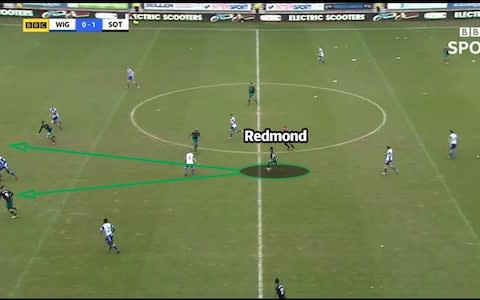
With two strikers, the two centre-backs are both occupied, making the offside trap extremely risky to execute. Full-backs need to stay a little deeper to add protection, but that allows the wide midfielders to get further up the pitch too.
In this example, Gabbiadini beats the last man for pace after a beautifully weighted pass from Redmond, and is fouled in the area.
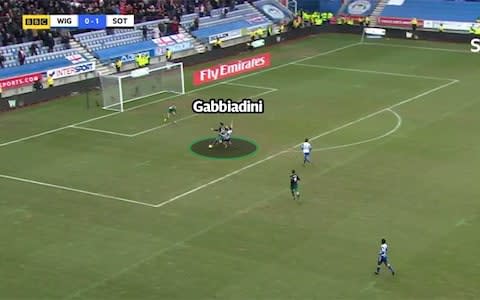
Wingers need targets to cross the ball to and with two strikers in the middle, and by focusing play down the wings (36 per cent right, 23 per cent middle and 41 per cent left), Southampton were able to take 14 shots and score twice. In their previous away game, admittedly one against Premier League opposition and not League One, they tried the same focus of passing and only had six efforts on goal.
The difference? Southampton had 49 per cent of possession against Wigan, and 63 per cent against Newcastle. There was purpose to the passing, with a much greater focus on vertical movement instead of passing aimlessly from side to side. Against Wigan, Southampon made 418 passes, against Newcastle 540 passes. Hughes changed the system to a direct one.
Where it didn't
As can be expected when a group of players has around two days to learn a drastically different style of play, the team didn't seem entirely sure of their roles and positioning, with the team shape suffering at times.
Getting a midfield two to work is especially tricky, with midfielders generally focusing on either defence or attack in the last few iterations of Southampton's usual 4-2-3-1 shape. Here, Lemina and and Hojbjerg had to forge a partnership on the fly while also learning to balance defence and attack. Imagine Paul Scholes and Roy Keane without the years of practise.
As a result, Wigan were able to counter rather too easily at times. Southampton's direct play meant that they often gave away possession and defensive positioning was key, something they'll have to get right if this is to work against better opposition.
In the first half, Hojbjerg is caught way behind the play during one of these counter-attacks. Lemina tries to put out the fire.

Wigan's Gavin Massey takes the ball forward to the box and chips into the middle. Hojbjerg has given up trying to get back in time.
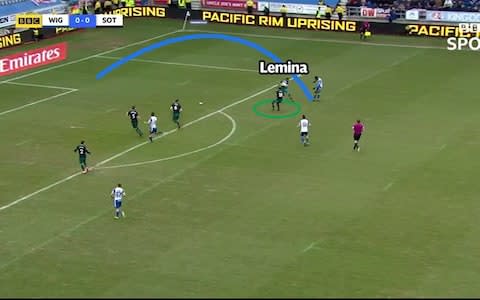
Lemina switches off and stands at the edge of the box.
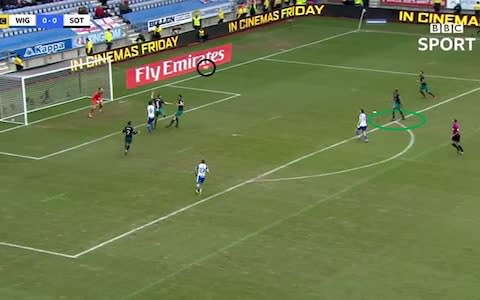
The danger is far from over though and his hesitation allows Gary Roberts to control the headed ball and shoot from just outside the six yard box.
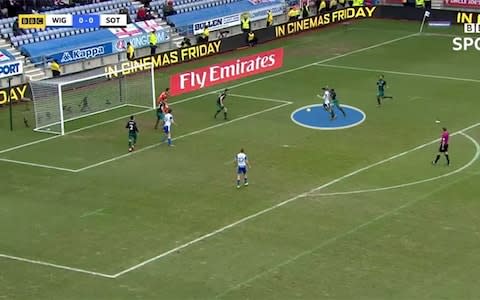
One of the big problems with a 4-4-2 is that because its attacking form is 4-2-4, the central midfielders can be outnumbered by a 4-3-3 or 4-2-3-1 and must accurately judge their runs forward so as not to leave the defence exposed. Equally, they must ensure they go on these attacking adventures to support forward play. It's something difficult to balance, especially with so little time on the training ground.
Additionally, the wingers need to take defensive responsibility and support their full-backs more often than Boufal in particular did against Wigan. Lemina was guilty of this too but was much improved after half time, perhaps having had a couple of warm words of encouragement from Hughes during the team talk.
It will be interesting to see if Hughes persists with this same setup in the Premier League since against better opposition, Southampton could have been punished on numerous occasions. The vulnerabilities shown will concern the manager despite the result.
The positive signs are that Hughes has demonstrated in his first game in charge that he intends to bring some attacking, forward-thinking play to Southampton. Safety from relegation isn't assured, Hughes' credentials as a manager who achieves anything except mid-table are in doubt, but the fans now know their team might actually try to score goals.

